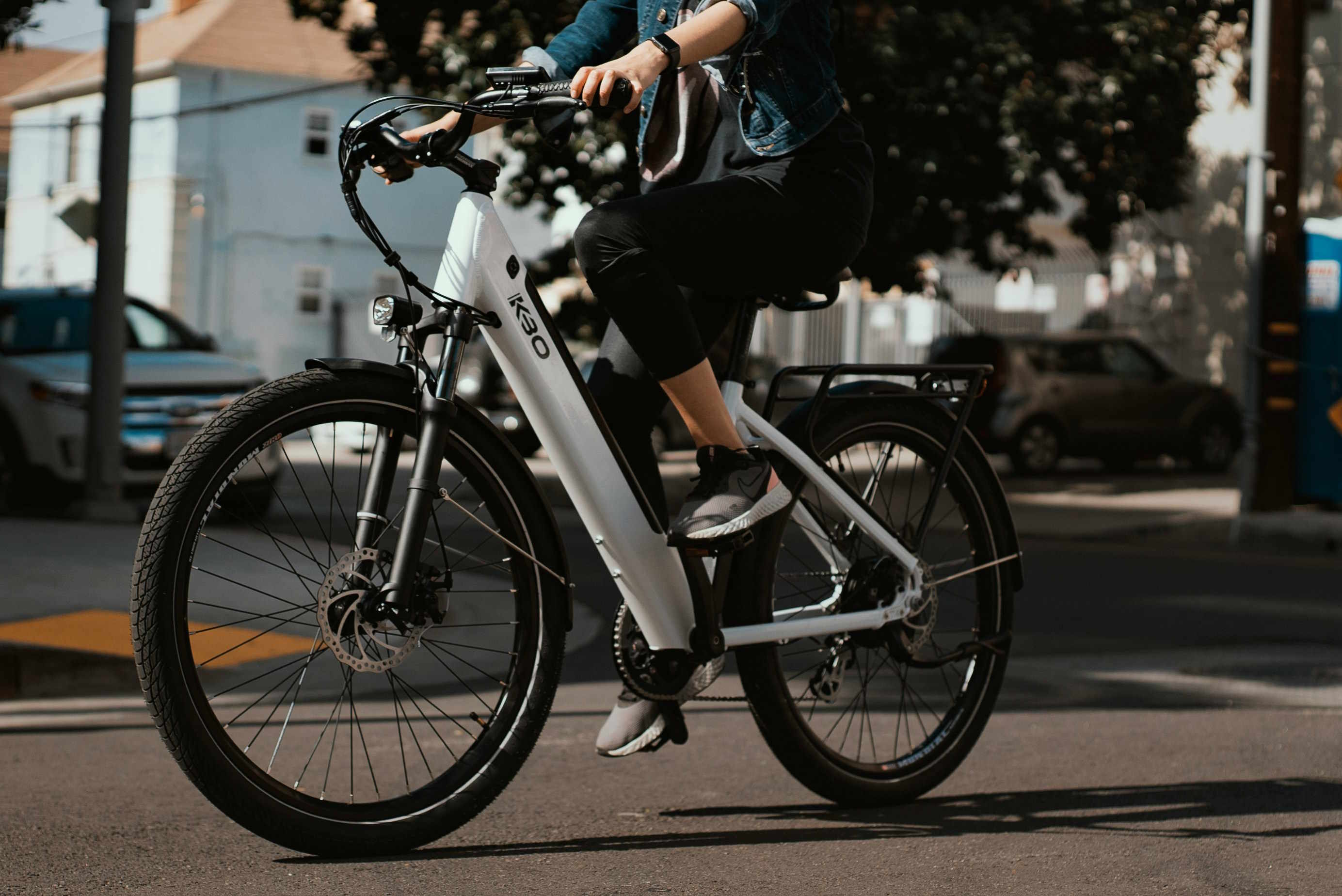E-Bikes in India: The Ultimate Guide for 2025
The electric bicycle revolution is transforming urban mobility across India. As cities grow more congested and environmental concerns mount, e-bikes offer a sustainable, efficient alternative to traditional transportation. This comprehensive guide explores everything you need to know about e-bikes in India for 2025, from technology and benefits to popular models and pricing considerations.
Electric bicycles are rapidly gaining popularity across India, offering an eco-friendly and efficient transportation solution in increasingly congested urban environments. With advancements in battery technology, supportive government policies, and growing environmental awareness, the e-bike market in India is projected to experience significant growth through 2025. This guide provides essential information for anyone considering an e-bike purchase in the coming year.
What is an E-Bike and How Does it Work?
An e-bike or electric bicycle is essentially a conventional bicycle equipped with an electric motor that provides pedal assistance or throttle-based propulsion. The core components include a battery pack, an electric motor, a controller, and typically a display unit. The motor engages when you pedal (pedal-assist) or activate a throttle, depending on the model.
The battery, usually lithium-ion, powers the motor and can be recharged by plugging into a standard electrical outlet. Most e-bikes in India offer multiple assistance levels, allowing riders to choose how much electric boost they want while pedaling. The controller serves as the bike’s brain, regulating power flow between the battery and motor based on rider input.
Modern e-bikes in India typically offer ranges between 25-80 kilometers on a single charge, depending on factors like battery capacity, terrain, rider weight, and assistance level used.
Benefits of E-Bikes in India
The adoption of e-bikes in India offers numerous advantages that address specific challenges in the Indian transportation landscape:
Reduced Commute Time: E-bikes help navigate through congested traffic more efficiently than cars or public transport, particularly in densely populated urban areas like Mumbai, Delhi, and Bangalore.
Cost-Effective Transportation: With rising fuel prices, e-bikes present significant savings on daily commuting costs. The electricity required to charge an e-bike costs a fraction of petroleum fuels, and maintenance costs are considerably lower than motorcycles or cars.
Environmental Impact: As India grapples with air pollution in major cities, e-bikes offer a zero-emission alternative that helps reduce the carbon footprint of daily transportation.
Health Benefits: Unlike fully motorized vehicles, pedal-assist e-bikes still provide physical activity, offering cardiovascular benefits while making cycling accessible to people of varying fitness levels and ages.
Reduced Dependency on Public Transport: E-bikes provide an independent mobility solution, reducing reliance on often overcrowded public transportation systems in Indian cities.
Types of E-Bikes Popular in India
The Indian market features several distinct categories of e-bikes, each designed for specific use cases:
City Commuter E-Bikes: These models prioritize comfort, practicality, and battery efficiency for daily urban commuting. They typically feature upright riding positions, fenders, lights, and sometimes cargo racks. Brands like Hero Lectro and Toutche offer popular city commuter models.
Foldable E-Bikes: Increasingly popular in space-constrained Indian homes, these compact e-bikes can be folded for easy storage and transport. They’re ideal for last-mile connectivity with public transportation. Examples include models from Heybike and Nexzu Mobility.
Performance E-Bikes: These higher-end models feature more powerful motors, superior components, and larger battery capacity. They cater to enthusiasts looking for longer rides or challenging terrain. EMotorad and GoZero are notable brands in this segment.
Cargo E-Bikes: Designed for utility and small business deliveries, these e-bikes can carry significant loads. They’re gaining traction for last-mile deliveries in congested urban areas where traditional vehicles struggle with access.
E-MTBs (Electric Mountain Bikes): With robust suspension systems and powerful motors, these bikes are designed for off-road adventures and are gaining popularity among adventure enthusiasts in regions near the Himalayas and Western Ghats.
Factors to Consider Before Buying an E-Bike
When shopping for an e-bike in India, several key considerations should guide your decision:
Range and Battery: Assess your typical riding distance and choose a battery capacity that comfortably exceeds it. Consider battery replacement costs, which can be significant.
Motor Power and Type: Indian regulations limit e-bike motors to 250W with a maximum speed of 25 km/h to qualify as non-motorized vehicles (avoiding registration and licensing). Hub motors (in wheels) are common in budget models, while mid-drive motors (at pedal crank) offer better weight distribution and performance but at higher costs.
Build Quality and Components: Evaluate frame material, braking systems, and overall durability. For Indian conditions with varied road quality, disc brakes and quality suspension can significantly improve the riding experience.
After-Sales Service: The e-bike ecosystem in India is still developing, so reliable service networks are crucial. Check if the manufacturer has service centers in your city or offers doorstep maintenance.
IP Rating: India’s monsoon season demands water-resistant electronics. Look for e-bikes with appropriate IP (Ingress Protection) ratings to ensure longevity.
Weight and Portability: Consider where you’ll store the bike and whether you’ll need to carry it up stairs or into elevators.
E-Bike Prices in India (2025)
The e-bike market in India spans various price segments, catering to different budgets and requirements. Here’s a breakdown of what to expect in 2025:
| Category | Price Range (₹) | Features | Popular Models |
|---|---|---|---|
| Entry-Level | 25,000-45,000 | Basic pedal assist, 25-35km range, lead-acid or basic Li-ion batteries | Hero Lectro C3, Nexzu Roadlark |
| Mid-Range | 45,000-80,000 | Enhanced Li-ion batteries, 40-60km range, disc brakes, digital displays | EMotorad EMX, Toutche Heileo M100 |
| Premium | 80,000-1,50,000 | Advanced motors, 60-100km range, smartphone connectivity, premium components | GoZero Mile, Tronx One |
| High-End | 1,50,000+ | Carbon frames, integrated tech, 100km+ range, top-tier components | Specialized Turbo, Giant Road-E+ |
Prices, rates, or cost estimates mentioned in this article are based on the latest available information but may change over time. Independent research is advised before making financial decisions.
Additional costs to consider include battery replacement (₹8,000-25,000 depending on capacity and type), regular maintenance, and potential accessories like helmets, locks, and lights.
Regulatory Framework and Future Outlook
The regulatory landscape for e-bikes in India continues to evolve. Currently, e-bikes with motors under 250W and maximum speeds of 25 km/h are classified as regular bicycles, requiring no registration or license. However, faster models with more powerful motors fall under electric vehicle regulations, requiring registration.
Looking ahead to 2025, several trends are likely to shape the Indian e-bike market. Battery technology improvements will continue to extend range while reducing weight. Integration with smart technology will become standard, with features like GPS tracking, smartphone connectivity, and theft protection. Government initiatives supporting electric mobility may introduce more incentives for e-bike adoption, potentially including subsidies or tax benefits.
As urban infrastructure develops, dedicated cycling lanes in major cities will make e-bike commuting safer and more practical. The growing focus on sustainable transportation solutions positions e-bikes as an increasingly viable option for environmentally conscious consumers across India.





